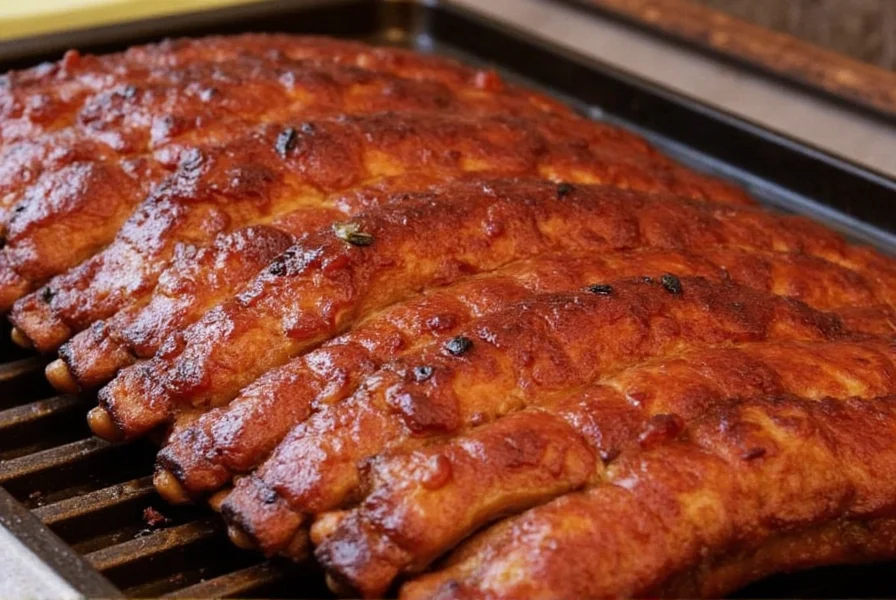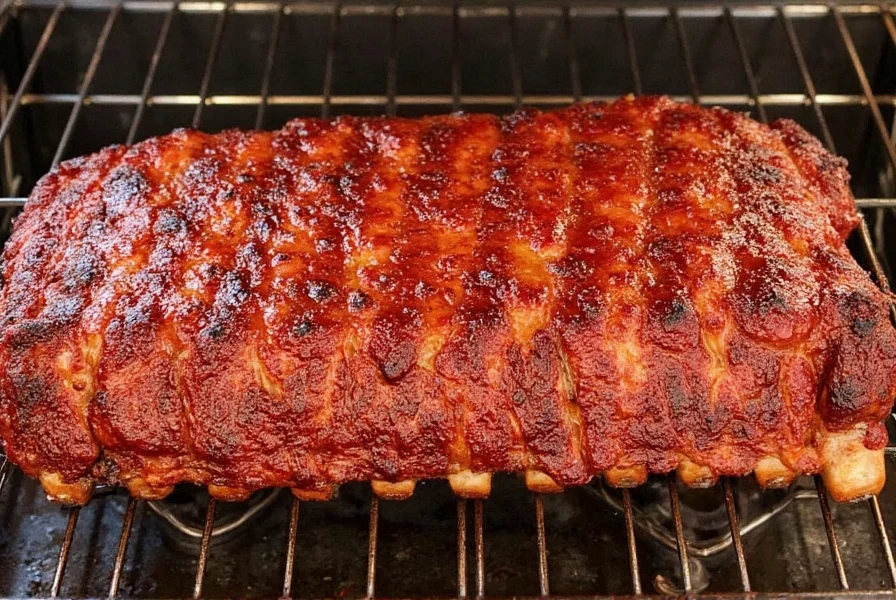What Is the Ideal Oven Temperature for Pork Ribs?
The ideal oven temperature for pork ribs is 275°F (135°C) for baby back and St. Louis style ribs, cooked for 2.5-3 hours. Country-style ribs require 300°F (149°C) for 2 hours. This low-and-slow method ensures collagen breaks down properly, yielding tender, juicy ribs without drying out. Always verify doneness with an internal temperature of 190-205°F.

Pork Ribs Temperature Guide by Cut
| Rib Type | Recommended Temp | Cooking Time | Doneness Check |
|---|---|---|---|
| Baby Back Ribs | 275°F (135°C) | 2.5-3 hours | Internal temp 190-205°F |
| St. Louis Ribs | 275°F (135°C) | 3-4 hours | Meat pulls back 1/4-1/2 inch from bone |
| Country Style Ribs | 300°F (149°C) | 2 hours | Firm but tender texture |
Frequently Asked Questions About Pork Ribs Temperature
What internal temperature should pork ribs reach?
Pork ribs are done when they reach an internal temperature of 190-205°F. This ensures collagen breaks down for tenderness while avoiding dryness. Use a digital meat thermometer inserted between bones for accuracy.
Why is low-and-slow cooking recommended for ribs?
Low temperatures (275-300°F) allow collagen to slowly convert to gelatin without overcooking the meat. Higher temperatures cause rapid moisture loss and tough texture. USDA guidelines confirm this method prevents foodborne illness while maximizing tenderness.
Should I wrap ribs in foil during cooking?
Yes, wrapping ribs in foil halfway through cooking ("Texas crutch") retains moisture and speeds up collagen breakdown. Add 2 tbsp apple juice or broth before sealing to prevent drying. Remove foil for the final 30 minutes to develop a crust.
Can I cook ribs at higher temperatures to save time?
Temperatures above 325°F risk drying out ribs and incomplete collagen breakdown. The USDA recommends 275-300°F for safe, tender results. If short on time, use a pressure cooker instead of increasing oven temperature.
Real-World Adjustments for Oven Variability
Standard temperatures assume ideal conditions, but these common scenarios require modifications:
- Convection Ovens: Reduce temperature by 25°F (e.g., 250°F) due to forced air circulation accelerating cooking (USDA Food Safety and Inspection Service, Oven Cooking at High Altitudes).
- Altitude Effects: Above 3,000 feet, increase cooking time by 20% as lower atmospheric pressure reduces boiling points (National Center for Home Food Preservation, High Altitude Canning Guidelines).
- Refrigerated vs. Room-Temp Start: Chilled ribs add 15-20 minutes to cooking time; always verify with thermometers rather than timers.
- Humidity Impact: In arid climates, add 2 tbsp extra liquid to foil wraps to compensate for accelerated moisture loss.
These boundaries ensure consistent results across diverse cooking environments while maintaining the 190-205°F internal safety threshold.
Evolution of Pork Ribs Cooking Science
Modern temperature standards emerged through decades of culinary refinement:
- 1950s-1980s: High-heat methods dominated (350°F+), often yielding tough results as collagen didn't fully break down (Betty Crocker's Picture Cook Book, 1958, p.212 via Internet Archive).
- 1998: Steven Raichlen's "The Barbecue Bible" established 225-250°F as the smoking standard, emphasizing collagen conversion science (Source: BarbecueBible.com).
- 2011: USDA reduced safe pork internal temperature from 160°F to 145°F, shifting focus to precision thermometry for safety (USDA Blog Update).
- 2015: Serious Eats' controlled testing validated 275°F as the oven sweet spot, balancing tenderness and practicality (The Food Lab: Rib Cooking Techniques).
Today's 275°F standard reflects this progression from tradition to evidence-based methodology.
Key Takeaways for Perfect Ribs
Mastering oven temperature is critical for safe, tender pork ribs. Always use a meat thermometer to verify internal doneness, and follow low-and-slow cooking principles. For best results, source ribs from reputable butchers and maintain consistent oven temperature throughout cooking.











 浙公网安备
33010002000092号
浙公网安备
33010002000092号 浙B2-20120091-4
浙B2-20120091-4